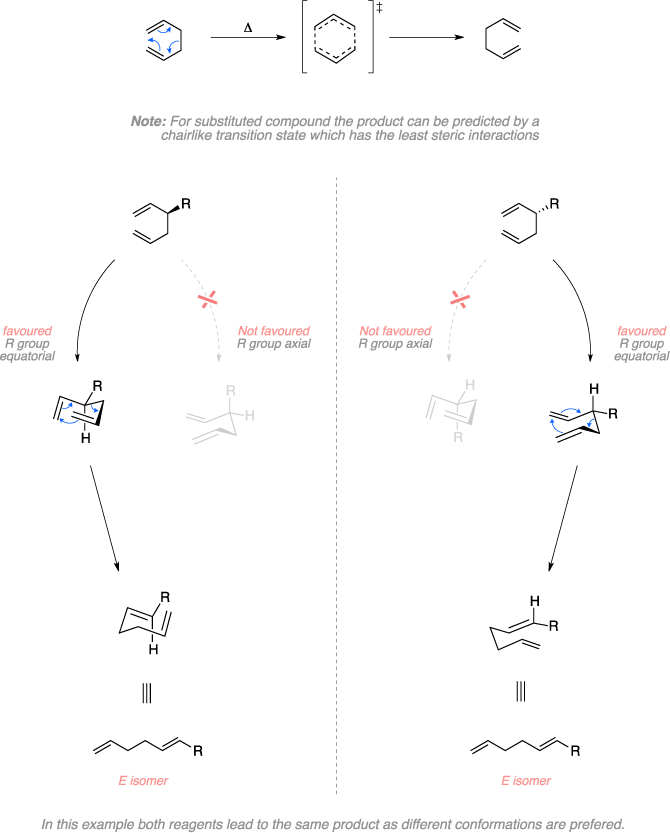Cope rearrangement
![Schematic of the Cope rearrangement. Reagents: 1,5-diene, heat. Product: 1,5-diene. Comments: Concerted [3,3]-sigmatropic rearrangement.](https://cdn.name-reaction.com/assets/_reaction_images/_png/cope-rearrangement-s-9f948c99161be812d5e529fc60e6a746.png)
The Cope rearrangement is an organic reaction where a 1,5-diene, under thermal conditions, is converted to another 1,5-diene structural isomer. This reaction belongs to a class of reactions termed "sigma tropic rearrangements" and it is a concerted process where bonds are forming and breaking at the same time. When substituents are present in the initial diene starting material, the stereochemistry of this reaction can be predicted by drawing the molecule in a chair-like conformation. Placing the substituents in the equatorial position minimizes the steric interactions and leads to the major product. The Cope rearrangement is an equilibrium reaction and the equilibrium position is determined by the overall stability of the starting material and product. [1]
Mechanism

References:
| 1. |
Cope, A. C.; Hardy, E. M.
J. Am. Chem. Soc.
1940,
62,
441–444.
|